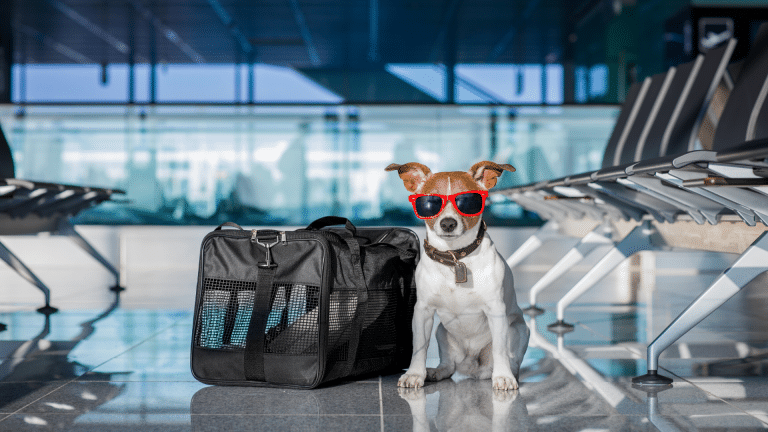Blog Flying with your Dog: Things to Know!
Airlines aren’t just accommodating more people in the planes these days but dogs as well. There also seems to be more dogs on board than ever before, and as more dog owners see pooches on planes, more want to bring theirs along, too. So how does one travel with a non-service, non-emotional support dog? Though it’s more complicated (and more expensive) than flying solo, it’s not exactly cost-prohibitive or difficult—you just have to follow the steps for flying with your dog
Here, is everything you need to know about flying with your dog, from booking your flight to landing at your destination.
Do Your Research
You need to look for non-stop flights with no plane changes and avoid flying during holiday periods when airlines—and airports—are busier than normal, to minimize the risk of your pooch (and, well, you) having anything go wrong. Is your pet flying in cargo? If you’re in a warm-weather destination, look for early morning or late evening flights when the temps aren’t so high; in cooler climates, earmark flights in the middle of the day, when the temps are warmest.
Get in touch with your airline
Booking online is usually not an option if you are planning to fly with your dog. Most airlines only allow a few dogs per flight, so you’ll need to call and make sure the plane has space for you and your dog before you book. (For this reason, always be sure to make reservations for you and your pet at the same time.) Typically, airlines charge an additional $100-$500 each way but check with the airline for its specific policies. (No, you can’t buy a seat for your dog.)
Take your dog for a health check
You need to take your dog to the vet once it has got its ticket and get a health certificate stating it is healthy enough to fly and up to date on its immunizations. The certificate is only good for 30 days, and you’ll need it for both your departure and return. (Many airlines even require that your dog’s clean bill of health be no more than ten days old.) So if you’re planning to leave for more than a month, a second visit to the vet while on vacation may be necessary. When you’re there, talk to your vet about day-of-feeding schedules for your pet, as dogs should fly on an empty or nearly empty stomach.
Make sure you have a good carrier or crate
The general rule of thumb: If your dog is small enough to fit in a carrier under the seat in front of you, you can bring it onboard. The carrier must be big enough for the dog to stand up and move around, and typically can’t be larger than 19 inches by 10 inches by 12 inches, but exact dimensions vary by airline. If your dog can’t fit comfortably in that size kennel, it will need to ride in the cargo hold.
If your dog can’t come with you
You can always board them with us! They will have fun and be distracted during your time away!

